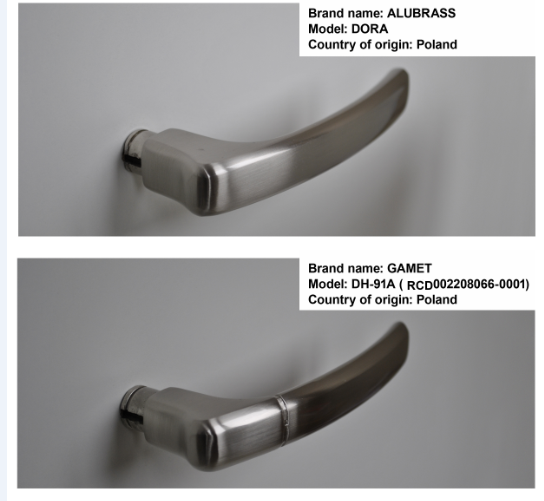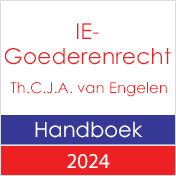 Modelrecht. Beroep tegen het ongelding verklaren van de inschrijving van het nieuw ingeschreven model voor deurklinken voor klassen 08-06.
Modelrecht. Beroep tegen het ongelding verklaren van de inschrijving van het nieuw ingeschreven model voor deurklinken voor klassen 08-06.
Het beroep wordt verworpen. Het nieuw ingeschreven model voor deurklinken (zie afbeelding onder) heeft geen eigen karakter. Het nieuwe model geeft dezelfde impressie als het bestaande model voor deurklinken (de ‘Dora-handle’, zie afbeelding boven). De groef in het nieuwe model is van ondergeschikt belang omdat het een klein deel van de gehele deurklink beslaat. Hierdoor kan de groef er niet voor zorgen dat het nieuwe model een eigen karakter heeft. Bovendien hebben de modellen gelijke vormen en afmetingen. Hierdoor zal het gemiddelde publiek niet het verschil tussen de modellen opmerken omdat ze enkel op detailniveau van elkaar verschillen. Om tot haar beslissing te komen heeft de kamer van beroep geen procedurele fouten gemaakt.
49. In its analysis of the groove shown on the contested design, the Board of Appeal correctly observed that it was an inherent feature of the design, visible from all angles. However, it was also right to find that that groove had only a slight effect on the overall impression produced by the contested design. It must be observed that the groove consists of a fine recessed vertical line surrounding the grip of the handle, therefore covering a very small area, in particular in relation to the size of the grip, of the contested design. Moreover, it is quite a simple form of decoration and it is unlikely that it would particularly capture the attention of the informed user.
52. Those contentions are not such as to call into question the Board of Appeal’s findings concerning the similarities of the designs at issue. In that regard, the Board of Appeal noted that the edges of the handles featured on both those designs were bevelled and rounded. It added that the shafts of those two handles were positioned in the same part of the grips, that is to say, as close as possible to the end that is to be connected to the door, and that those shafts were wider at the grip end than at the door end. Furthermore, it observed that the dimensions of the shafts relative to those of the grips were very similar and that each of the designs at issue had a bulge at the grip end where the perpendicular shaft connected the handle to the door. Next, the Board of Appeal concluded from those findings that the shape and dimensions of the shafts and the grips and the proportions of the former relative to the latter do not differ materially. It added that there were no material differences in the depth of the grips and the degree of bevelling and rounding of the edges of the handles. It concluded that, save for the groove on the contested design, the overall impression given by that design was in all respects identical to that given by the earlier design.
T-306/16 - ECLI:EU:T:2017:466
IEPT20170705, GEU, Gamet v EUIPO



























































